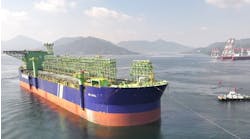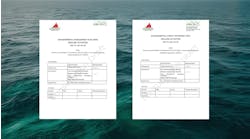Coiled tubing, formation evaluation trigger changes
The technological development that brought drilling costs down 75% over the last 25 years from what they would otherwise have been will continue far into the next century. Technology is quickly accepted and product life cycles are far shortened, with the result that one generation of development lasts only five years.Two Halliburton Energy Services research specialists presented this changing research and development environment at the Offshore Northern Seas conference in Stavanger, Norway in August. The projections were for the next 7-10 years. Among the downhole changes (and other conditions that will influence drilling and production) they are forecasting for the 1998-2005 period:
- Logging while drilling (LWD) formation testers and nuclear magnetic resonance tools will become field proven by the end of 1999.
- Remote pay zone steering of offshore wells, among other communications capabilities, will be enabled by such network developments as Motorola's Iridium communications satellite.
- Casing will be expanded downhole, enabling deeper drilling of smaller uniform diameter wells.
- Riserless drilling will become available for more applications.
- The applications of multilateral wells will expand.
- An extended reach well longer than 15 km will be drilled.
- The trend toward subsea production and large floating facilities will continue. In conjunction, the last large fixed conventional platform will be built before 2005.
- Smart well completions will mature and become more common, including downhole separation of oil, gas, and water.
- Gas-to-liquid conversion should become commercial at $14/bbl.
Beyond 2005
Beyond the year 2005, the two are projecting even more significant overall changes to the industry that will impact drilling far into the next century. These changes include the following:- Rigs will drill more wells per rig per year, meaning that fewer rigs will be needed to drill the same number of wells.
- Riserless drilling will become commercially available for deepwater applications.
- Laser-assisted drilling will become commercial in some applications.
- Extended reach wells will be drilled to 20 km lengths.
- Drilling fluids will become even cleaner and safer.
- Computer and communications gear will become integrated and transparent around the globe.
- Seafloor gas-to-liquids conversion may become commercial.
The why of development
"To see beyond the next generation, we need to let go of some paradigms," the authors caution. "What if we could drill without drill pipe? Without a rig? What is we could drill a hole from spud to TD with only one diameter throughout, and with a single bit? What would that bit cost.""But furthermore, what would (that technology) be worth," the authors emphasized. "What if we did not need casing and cement to equip a well? How many people do we really need to drill an offshore well. Can we do it with only 20 people on board, or with just three."
These changes would shift the entire industry. "Wells will be drilled and evaluated in perhaps half the time and at a third of the cost of our most optimistic current authorizations for expenditure."
These changes must be seen through the eyes of the past in order to place them in perspective. "Twenty-five years ago, measurement while drilling (MWD) was called 'Marvin's Wild Dream.' Fifteen years ago, suggestions of logging while drilling (LWD) and LWD formation testing were ridiculed as 'impossible.'
A quotation dating back to 1978, presented by the authors, is indicative of the inability to envision future technical development. "It is not expected that formation evaluation measurements while drilling will replace conventional logging...due to the complexity of systems required for detailed logging as well as the high degree of sophistication and sensitivity of today's logging system." Logging while drilling was foreseen five years earlier (1973), and commercialized only six years following the quotation, according to the authors.
Other benefits
But more than impacting the industry's economics, technology will produce environmental benefits as well. "With the advent of directional and horizontal drilling, the amount of surface acreage required to exploit a reservoir is now greatly reduced," the authors point out. "Environmentally sensitive surface and seafloor sites are readily avoided, drilled around and underneath.The nature of drilling fluid technology has changed considerably also. "New drilling fluids introduced during the past 15 years have many of the beneficial drilling properties of oil-based muds, but are more environmentally friendly," they explain. "Oil-base drilling muds may continue to be needed occasionally to lubricate and free stuck pipe; but the industry has done much to develop newer non-toxic synthetic lubricants to replace them."
Deepwater drilling
The basic rig has not changed over the past 70 years, the authors point out. "Deepwater drilling technology is like many others that, while significant within their disciplines, have not changed the way we explore and drill for oil.""Today's rigs are bigger, more reliable, safer, cleaner, and can drill farther, operate at greater water depths and in colder weather...but the basic drilling unit is unchanged. Apart from the addition of top drives and automated pipe handling systems, there have been few changes."
The one exception to this sameness is the coiled tubing unit, the authors cite. "This holds real potential to be a real revolutionary change in drilling. It took MWD to the late 1970s to become a viable commercial service - and begin to impact directional drilling. It took 5-10 years to made a visible impact in seismic and reservoir evaluation. It is likely that it will take coiled tubing drilling a similar time span to mature enough to change the drilling process."
Reference
Stroud, T., Heysse, D., "Beyond the Next Generation in Drilling Technology," Offshore Northern Seas Conference, Stavanger, August, 1998.Copyright 1998 Oil & Gas Journal. All Rights Reserved.


